TOPICS
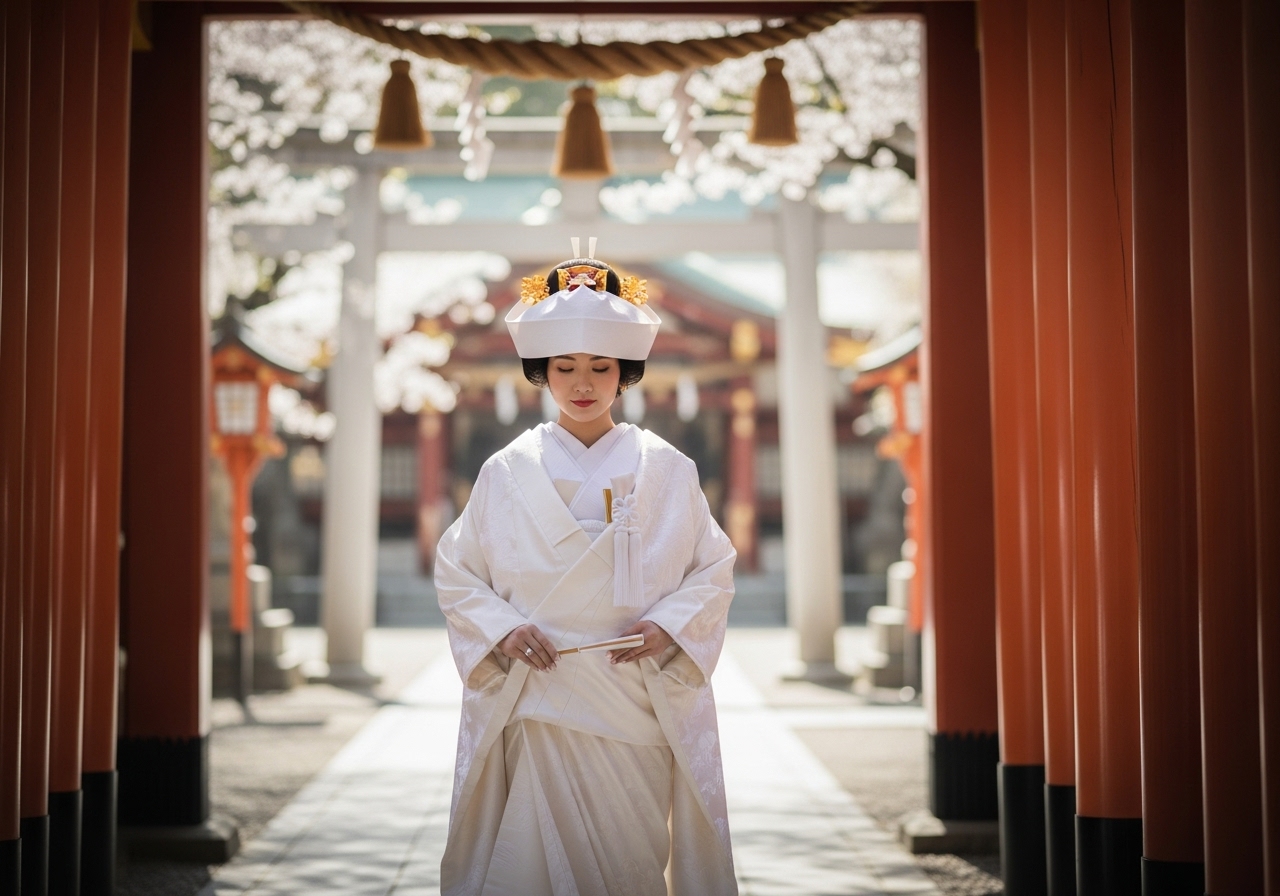
Japanese Wedding Kimono: The Beauty and Meaning Behind Japan’s Bridal Tradition
Weddings in Japan are filled with beauty, symbolism, and centuries-old customs.
One of the most striking elements of a Japanese wedding is the wedding kimono — a breathtaking traditional garment that represents purity, happiness, and new beginnings.
Unlike Western wedding dresses, the Japanese wedding kimono is not just one outfit. It comes in several styles, each rich in meaning and worn for different moments of the ceremony.
Let’s explore the world of Japanese bridal kimono and see how they reflect the heart of Japan’s wedding traditions.
???? The Three Main Types of Japanese Wedding Kimono
Shiromuku (白無垢)
The Shiromuku is an all-white bridal kimono made of silk, symbolizing purity and a fresh start.
Every element — from the kimono to the headdress — is pure white.
It represents the bride’s willingness to “take on any color,” meaning she will harmonize with her husband’s family.
???? Commonly worn in Shinto ceremonies.
Iro-Uchikake (色打掛)
A colorful, ornate kimono worn over another kimono.
It’s often embroidered with cranes, flowers, or phoenixes — symbols of good fortune and everlasting love.
The Iro-Uchikake is typically made of silk brocade, giving it a regal, layered appearance.
???? Worn during photo sessions or receptions.
Hikifurisode (引振袖)
Similar to a furisode but with a trailing hem, this kimono is often worn by brides in modern weddings.
It combines elegance and practicality — perfect for those who prefer a slightly more contemporary style.
???? Often chosen for hotel or Western-style wedding venues.
???? Symbolism in Colors and Patterns
Each Japanese wedding kimono design carries hidden meanings:
White – Purity and new beginnings
Red – Good luck and celebration
Gold – Prosperity and joy
Cranes – Lifelong marriage and happiness
Peonies & Chrysanthemums – Beauty, honor, and longevity
The designs are more than decoration — they’re a visual blessing for the couple’s future.
???? Price and Rental Options in Japan
Owning a bridal kimono can be very expensive due to the silk and craftsmanship involved.
However, rental services in Japan make it accessible for both locals and foreign couples.
Typical price ranges:
Shiromuku rental: 100,000–200,000 yen
Iro-Uchikake rental: 120,000–250,000 yen
Photo shoot plan (kimono + makeup + photography): around 50,000–150,000 yen
Purchase: 500,000 yen–2,000,000 yen (for handwoven silk or antique designs)
Popular wedding kimono rental spots include:
Kawaii Osaka (Osaka, Namba) – Offers premium kimono with hairstyling and makeup.
Kyoto Kimono Rental Wargo (Kyoto) – Professional wedding photo sessions in traditional temples or gardens.
Maikoya Kyoto / Tokyo – Specializes in cultural wedding experiences for international couples.
???? The Modern Japanese Wedding Experience
Many couples today mix traditional and modern styles — a Shiromuku ceremony at a shrine, followed by a Western gown for the reception.
For tourists or destination weddings, rental photo shoots in Kyoto or Osaka’s temples have become incredibly popular.
???? Tip: Some studios provide bilingual staff, makeup artists, and even Shinto-style ceremonies for foreign couples.
???? Why the Japanese Wedding Kimono Still Matters
Even in modern Japan, wearing a wedding kimono connects the couple to centuries of tradition.
It’s not just a costume — it’s a spiritual symbol of respect, purity, and family unity.
When a bride wears her Shiromuku or Iro-uchikake, she carries Japan’s cultural beauty with her —
a timeless link between the past and the future.
✨ Final Thoughts
The Japanese wedding kimono is more than a bridal outfit — it’s an art form that tells a story of devotion and elegance.
Whether you rent one for a photoshoot or witness a Shinto ceremony, the grace of these garments leaves a lasting impression.
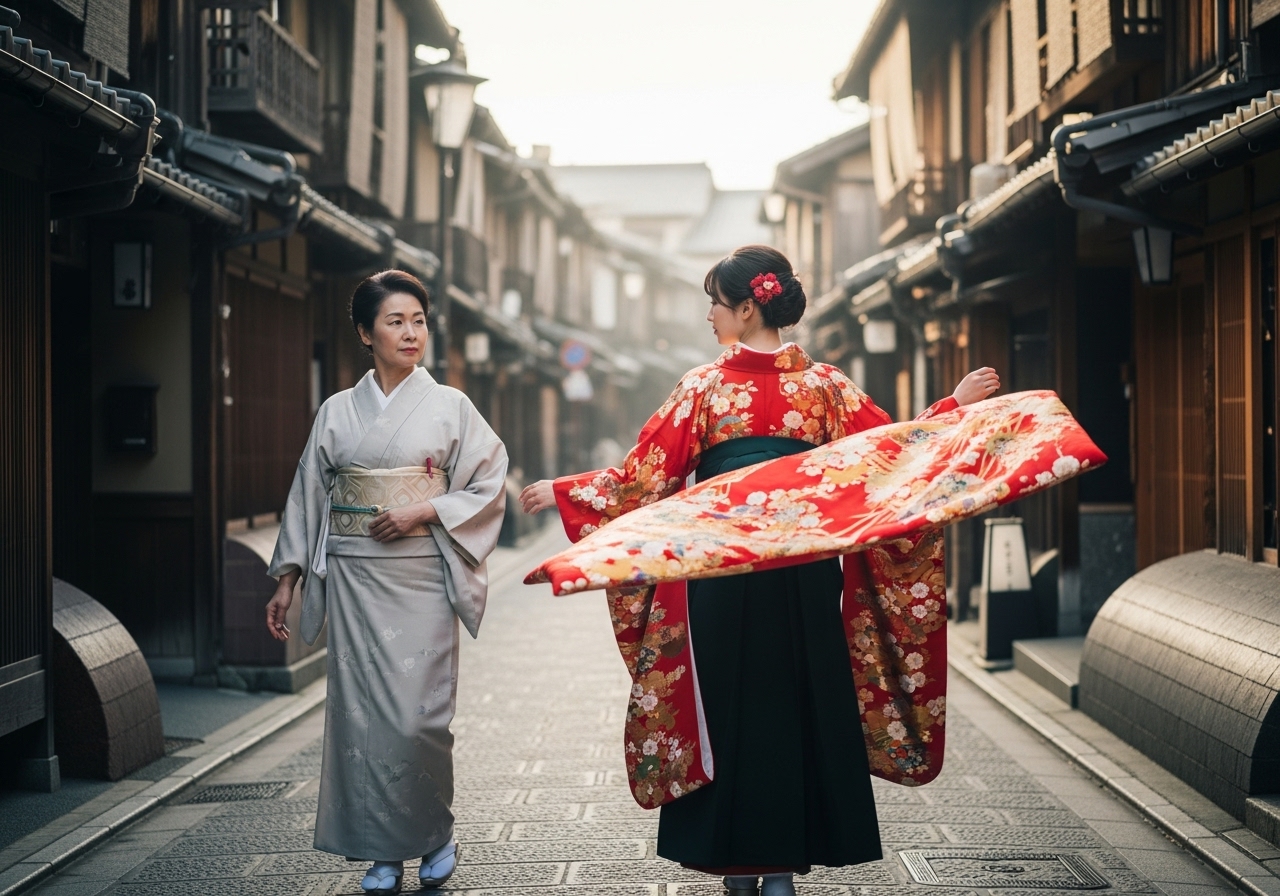
Furisode vs Kimono: Understanding the Real Difference, Meaning, and Price in Japan
When visiting Japan, you’ll see many people wearing beautiful traditional outfits — some with long flowing sleeves, others simpler and shorter.
These are all types of kimono, but one in particular stands out: the furisode.
Although they look similar at first glance, furisode and kimono represent different meanings, occasions, and even social status in Japanese culture.
If you’re planning to rent or buy one during your trip, here’s the complete guide that explains what makes them different, when to wear each, and how much they actually cost in Japan.
???? What Is a Kimono?
“Kimono” literally means “something to wear.”
It’s the general term for traditional Japanese clothing — worn by men and women, young and old, in both casual and formal settings.
A typical kimono is made from silk, polyester, or cotton, wrapped around the body with an obi belt, and worn with zori sandals and tabi socks.
The design and fabric indicate its formality: plain and light colors are for everyday use, while vibrant patterns and silk fabrics are reserved for ceremonies.
Today, kimono are often worn during weddings, graduations, tea ceremonies, or cultural experiences such as photo shoots and sightseeing rentals.
???? What Is a Furisode?
The furisode (literally “swinging sleeves”) is a special type of kimono — longer, more decorative, and deeply symbolic.
Traditionally, furisode are worn by unmarried women as a sign of youth, elegance, and readiness for marriage.
They are characterized by their long sleeves, which can extend 85–114 centimeters.
Made of luxurious silk, furisode are covered in vivid patterns, often hand-painted or embroidered with gold and silver thread.
Because of their beauty and complexity, they are considered the most formal type of kimono for women.
Furisode are commonly worn at:
Coming-of-Age Day ceremonies (Seijin-shiki)
Weddings (by the bride or young guests)
Graduation events
Family celebrations or cultural festivals
???? Furisode vs Kimono: The Key Differences
While both are traditional Japanese garments, their purpose, design, and symbolism are very different.
???? Main differences:
Sleeve length: Furisode have very long, swinging sleeves; kimono have shorter ones.
Who wears it: Furisode are for unmarried women; kimono can be worn by anyone.
Occasions: Furisode are for formal ceremonies; regular kimono can be casual or formal.
Price: Furisode are more expensive due to their silk quality and embroidery.
Symbolism: Furisode represents youth, beauty, and celebration. Kimono represents tradition and everyday elegance.
So if you see a woman wearing a vibrant robe with long, flowing sleeves — that’s a furisode.
???? Furisode vs Kimono: Price Comparison in Japan
Because of the craftsmanship and fabric, furisode are significantly more expensive than regular kimono.
Here’s what you can expect when renting or buying in Japan:
Rental prices:
Kimono: 3,000–10,000 yen per day
Furisode: 13,000–15,000 yen with hair and makeup
Luxury silk furisode: 25,000–30,000 yen or more
Purchase prices:
Cotton yukata: 3,000–10,000 yen
Polyester kimono: 10,000–30,000 yen
Silk kimono: 50,000–200,000 yen
Furisode: 200,000–1,000,000 yen+
For travelers, renting is the best option. You can wear a genuine furisode or kimono, enjoy professional styling, and take beautiful photos — all for a fraction of the cost.
???? Where to Rent a Kimono or Furisode in Japan
If you’re visiting Osaka, one of the most convenient and popular shops is Kawaii Osaka, located near Dotonbori and Namba.
Their rental plans include:
90-Minute Kimono Plan: 4,000 yen
1-Day Kimono Plan: 5,000 yen
Furisode Plan: 13,000 yen (15,000 yen with hair & makeup)
Luxury Furisode Plan: 30,000 yen (with full styling)
All rentals include the kimono, obi belt, sandals, bag, and dressing assistance.
You can keep your outfit until 9 PM, so you have plenty of time to explore the city and capture great photos by the canal or Osaka Castle.
They also offer a professional photo shoot service (18,000 yen/hour), perfect for couples, families, or solo travelers wanting high-quality memories.
Staff speak English, Chinese, and Japanese — so you can relax and enjoy the experience without worrying about communication.
???? When to Choose a Kimono and When to Choose a Furisode
Choose a kimono if you want a comfortable, casual experience while exploring temples, shrines, or city streets.
Choose a furisode if you want to celebrate something special, or experience Japan’s highest level of traditional beauty.
Many travelers rent a regular kimono for one day, then try a furisode for a professional photo session.
Both experiences are unique — one feels peaceful and elegant, the other feels luxurious and ceremonial.
???? Final Thoughts: Furisode vs Kimono
The difference between furisode and kimono isn’t just about sleeve length — it’s about meaning.
A furisode is Japan’s most formal, expressive garment, symbolizing youth, celebration, and art.
A kimono, in contrast, embodies everyday grace and timeless simplicity.
If you’re visiting Japan, rent one and see how it feels.
Walking through Osaka or Kyoto in traditional clothing will make you see the country in a completely new way — not just as a tourist, but as part of its living culture.
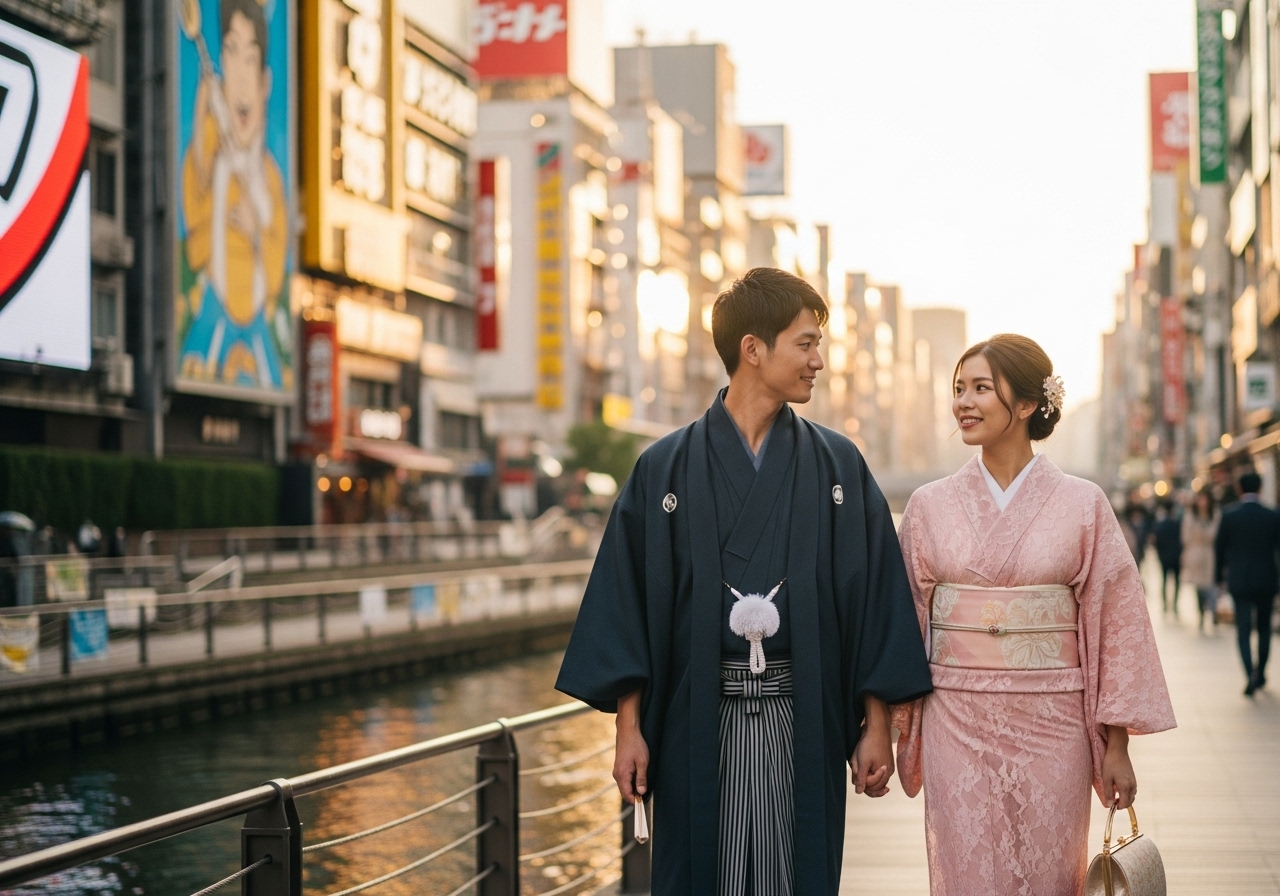
How Much Is a Kimono in Japan? A Complete Guide to Prices, Rentals, and Cultural Beauty
If you’re visiting Japan, wearing a kimono is one of the most beautiful ways to experience the country’s tradition.
From Kyoto’s narrow streets to Osaka’s lively Dotonbori, kimono rentals let you step into Japanese culture — even for just a day.
Among many options, Kawaii Osaka is one of the most popular rental shops in Osaka, located only a few minutes from Namba and Dotonbori.
Let’s take a closer look at how much kimono rentals really cost, what you can expect, and why it’s worth adding to your trip.
???? Kimono Rental Prices in Japan
Across Japan, prices for kimono rental usually range from 3,000 to 10,000 yen depending on fabric, location, and service.
In cities like Kyoto or Tokyo, a one-day plan typically costs around 5,000 yen, while special or premium kimonos can go much higher.
In Osaka, Kawaii Osaka offers several flexible plans perfect for tourists:
90-Minute Kimono Plan – 4,000 yen + tax
Ideal for quick sightseeing or short photoshoots.
You can wear a yukata in summer or a kimono in winter.
1-Day Kimono Plan – 5,000 yen + tax
Return by 9 PM on the same day.
Perfect if you want to explore Dotonbori, Shinsaibashi, or Osaka Castle in traditional style.
Luxury Furisode Plan – from 13,000 yen (15,000 yen with hair and makeup)
Formal kimono used for weddings or celebrations.
Lace Kimono Plan – from 10,000 yen (12,000 yen with hair and makeup)
Trendy and cute — perfect for girls’ day out and matching outfits.
Hakama Plan – from 9,000 yen (11,000 yen with hair and makeup)
Retro “Taisho Romantic” style, available for men and women.
Premium Tour Plan with Driver – 31,000 yen + tax
Includes a private chauffeur who will take you to Osaka’s most scenic photo spots until 9 PM.
Ideal for autumn foliage season or luxurious sightseeing.
Optional add-ons are available, such as:
Hair styling (2,000 yen)
Full makeup (5,000 yen)
Kimono accessories (from 500 yen)
Japanese umbrella or katana (1,000 yen each)
All prices include dressing service, obi belt, sandals, and bag — everything you need for a complete look.
???? What Makes Kawaii Osaka Special
Kawaii Osaka stands out for its warm, personalized service and multilingual support.
Staff can assist you in English, Japanese, and Chinese, ensuring that even first-time visitors can enjoy the experience comfortably.
The shop is open from 10:00 AM to 10:00 PM, giving travelers enough time to rent, dress, and explore without rushing.
The location — 1-9 Soemoncho, Chuo-ku, Osaka — is just steps from Namba and Dotonbori, two of Osaka’s liveliest districts.
The shop’s interior blends modern aesthetics with Japanese tradition, and the staff help coordinate accessories, hair, and makeup to match your chosen kimono.
They also partner with professional photographers, offering photo tours starting from 18,000 yen per hour for up to four people.
???? Why You Should Try a Kimono in Osaka
Osaka offers a mix of city energy and cultural charm, making it an ideal place to wear a kimono.
You can stroll through Dotonbori’s neon lights, visit Shitenno-ji Temple, or take photos near Osaka Castle.
Unlike Kyoto, where rentals can be crowded, Osaka’s atmosphere is more relaxed and spontaneous.
Many travelers also appreciate how Kawaii Osaka combines tradition with fashion — from elegant furisode to cute lace kimonos that feel like modern streetwear.
It’s not just about wearing something beautiful, but about expressing yourself in Japanese style.
???? Tips for Tourists
Arrive early to avoid waiting during busy hours.
Keep your obi belt tied securely — staff can help adjust it.
Avoid rainy days or bring an umbrella.
Bring your camera or ask staff for photo spots around Dotonbori.
For couples, matching kimono sets are available and look great in photos.
???? The Beauty Behind the Kimono
Wearing a kimono changes how you move, walk, and see the world.
The soft layers encourage calm, the tight obi improves posture, and the moment you step outside — everything feels a little more graceful.
In Japan, the kimono is not just fashion; it’s a bridge between generations, blending elegance and respect in every fold.
Even if you wear it for just a few hours, you’ll carry that feeling long after your trip ends.
???? Final Thoughts
So, how much is a kimono in Japan?
For most travelers, expect to spend around 4,000 to 10,000 yen for a full-day rental — or more if you choose luxury styles like furisode or lace kimono.
If you’re in Osaka, Kawaii Osaka offers both convenience and authentic charm, located just minutes from the heart of Namba.
Wearing a kimono here isn’t just about taking photos — it’s about living a piece of Japanese culture.
Whether it’s a short stroll through Dotonbori or a full-day adventure, your kimono experience will surely become one of your most unforgettable memories in Japan.
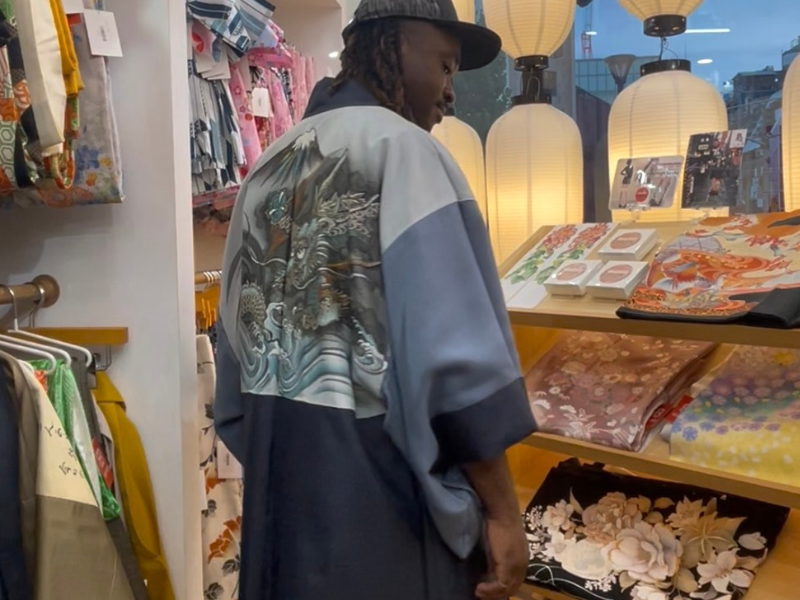
The “Oshima Haori” from MACHIKO KIMONO is available for purchase at Kawaii Osaka
It’s a super stylish design and one of our most popular items for the haori style look.
Each piece has been beautifully dry-cleaned and carefully maintained.
We are the only store in Osaka carrying MACHIKO KIMONO items — don’t miss it!
We look forward to your visit.
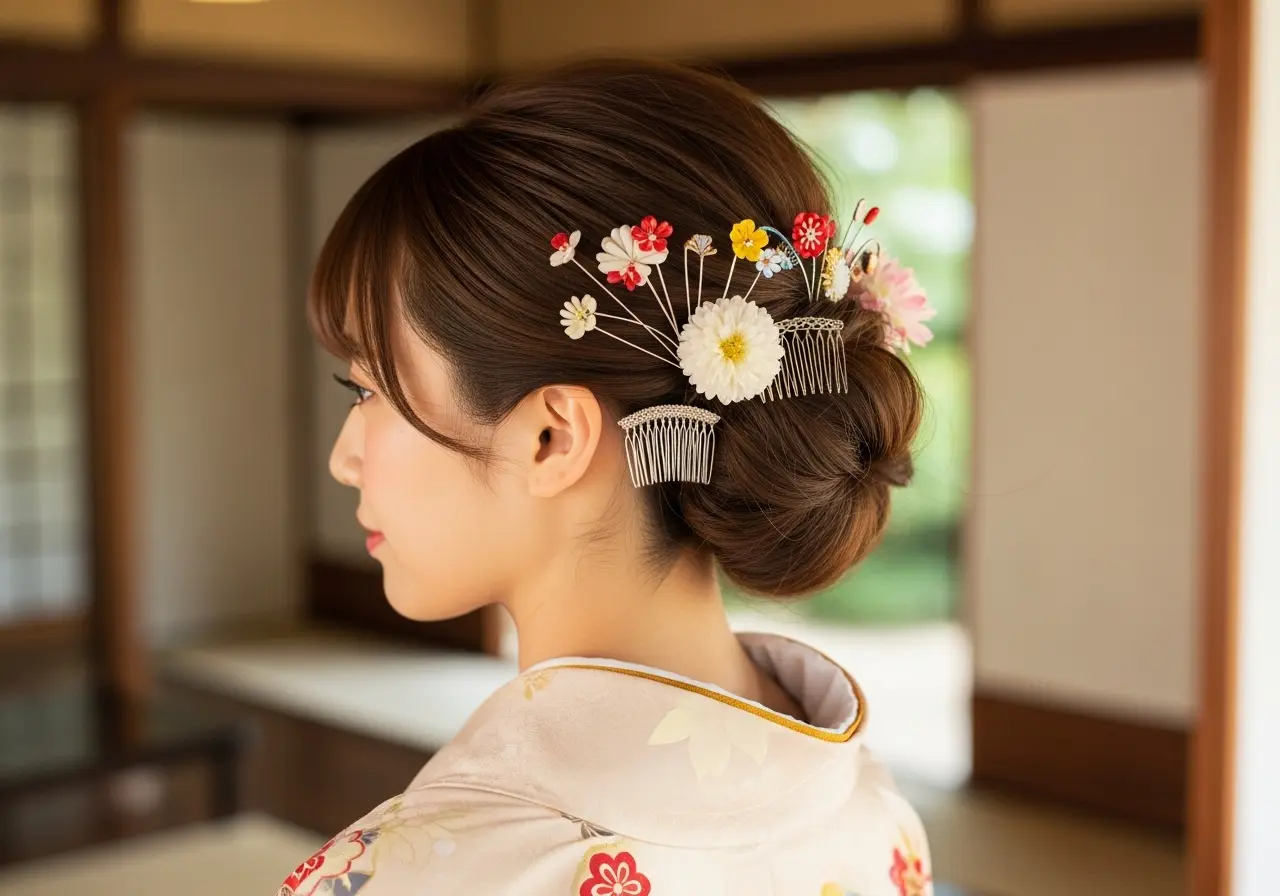
Kimono Hairstyles: 6 Elegant Hair Arrangements That Complete Your Look
Find the Perfect Style to Match Your Kimono at Kawaii Osaka
A beautifully styled kimono deserves an equally elegant hairstyle.
Your hair is the final touch that completes your traditional look and brings balance to your silhouette. Whether you have long or short hair, there’s a style that will make your kimono shine.
Here’s a guide to six stunning hair arrangements that blend Japanese tradition with modern beauty.
1. Classic Bun (Shimada Style Inspired)
Best for: Long or medium hair
Style: Traditional and timeless
This elegant updo is inspired by the shimada style worn by geisha and brides. The bun is placed high and centered, emphasizing the neckline and collar of the kimono.
Perfect with: Formal kimonos and obi with rich patterns
Accessory tip: Add a simple kanzashi or pearl hairpin for a graceful finish.
2. Soft Low Chignon
Best for: Medium to long hair
Style: Elegant and understated
A low bun at the nape of the neck creates a calm, refined impression. Ideal for temple visits or formal photoshoots.
Perfect with: Modern-style kimonos or solid colors
Accessory tip: Pair with a delicate floral clip or gold ornament for subtle sparkle.
3. Braided Half-Up Style
Best for: Long hair
Style: Romantic and photogenic
This hairstyle keeps hair off the face while allowing soft waves to flow down. It combines modern charm with traditional elegance.
Perfect with: Yukata or casual kimono styles
Accessory tip: Add a small silk flower or ribbon matching your obi color.
4. Short Hair Elegance
Best for: Bob or short styles
Style: Simple and chic
Even short hair can look polished with careful styling. Use a curling iron for soft waves or smooth it into a neat side part.
Perfect with: Retro-patterned kimonos or bold designs
Accessory tip: A single bold kanzashi or headband-style ornament draws attention to your face.
5. Ponytail with Decorative Tie
Best for: Medium to long hair
Style: Modern and practical
A sleek ponytail tied with a decorative cord (mizuhiki) or ribbon offers a stylish and comfortable option, especially for active days.
Perfect with: Colorful yukata or contemporary kimono looks
Accessory tip: Choose a ribbon or tie that echoes the colors of your kimono or obijime.
6. Floral Crown or Cluster Arrangement
Best for: Any hair length
Style: Festive and romantic
Clusters of small silk flowers arranged above a bun or around the side bring a soft, seasonal charm—especially lovely for spring or summer.
Perfect with: Floral-patterned kimono or pastel colors
Accessory tip: Coordinate flowers with seasonal motifs like cherry blossoms in spring or chrysanthemums in autumn.
Styling Advice from Kawaii Osaka
At Kawaii Osaka
, professional stylists will help you choose the best hairstyle for your face shape, hair type, and kimono design.
You can also select from a variety of accessories—from traditional kanzashi to modern floral clips—to complete your look.
Hair styling is available as part of your kimono rental plan, so you can arrive, relax, and leave everything to us.
Final Thoughts
A well-matched hairstyle transforms a simple kimono into a complete, harmonious outfit.
Each style tells a different story—classic, romantic, modern, or playful.
Find the one that expresses your personality and captures the spirit of your journey in Osaka.




